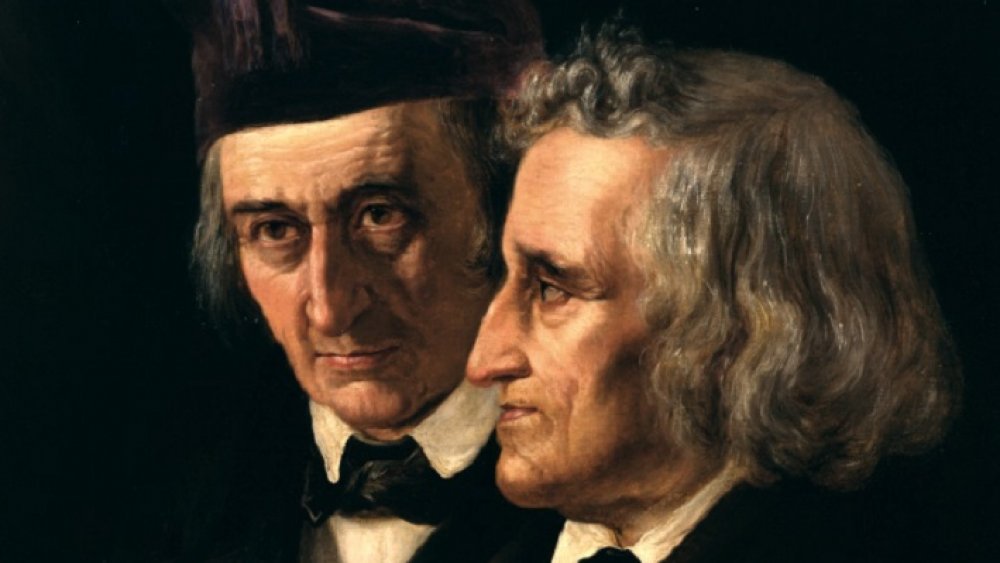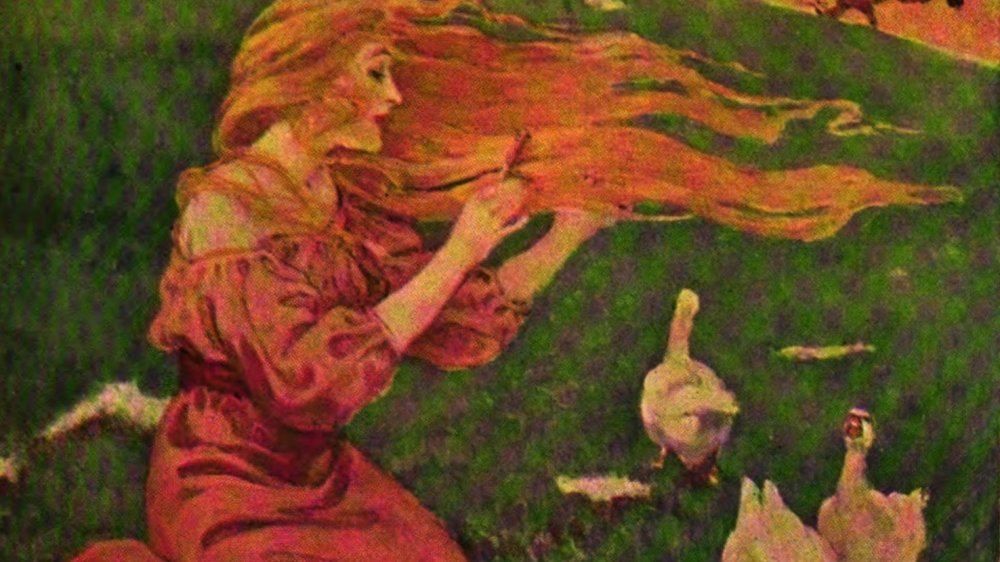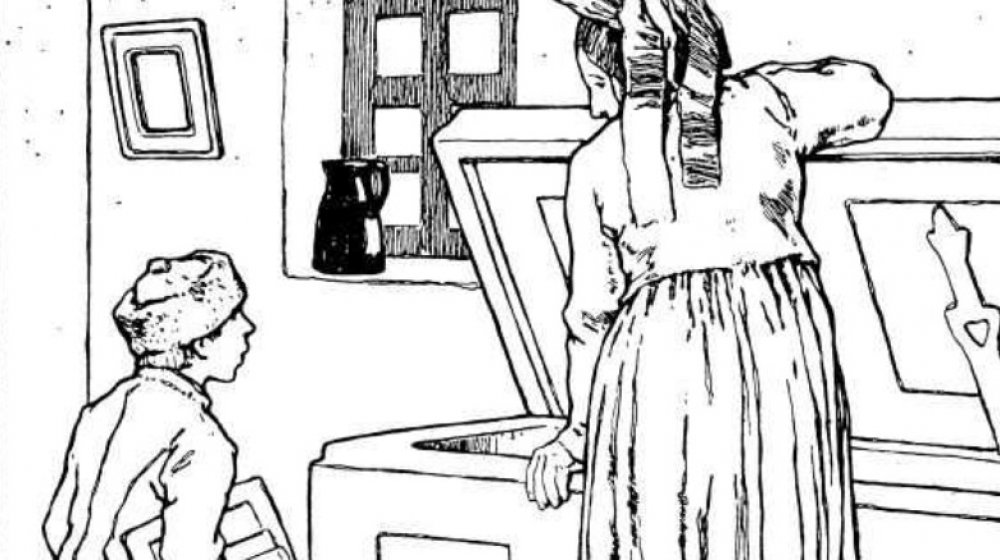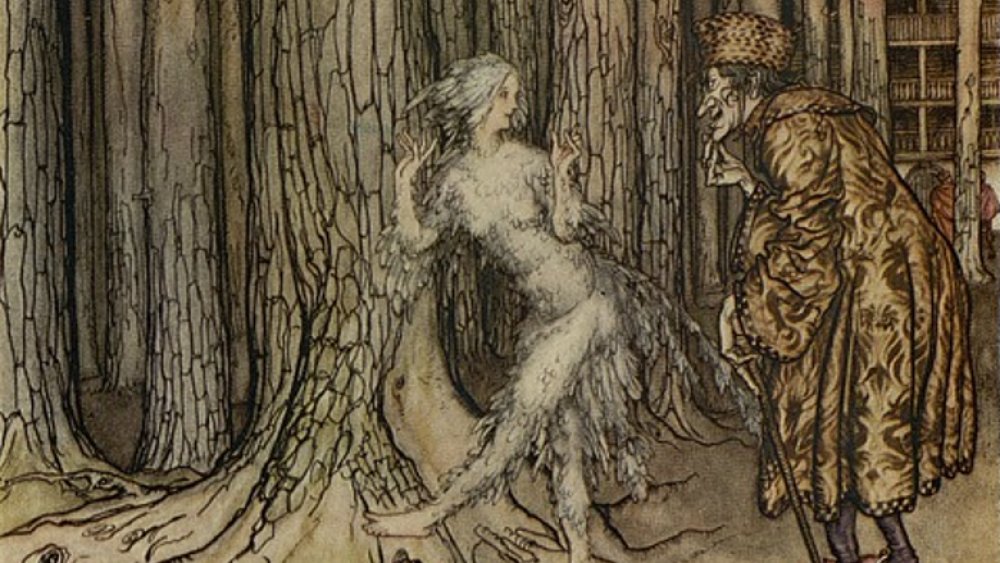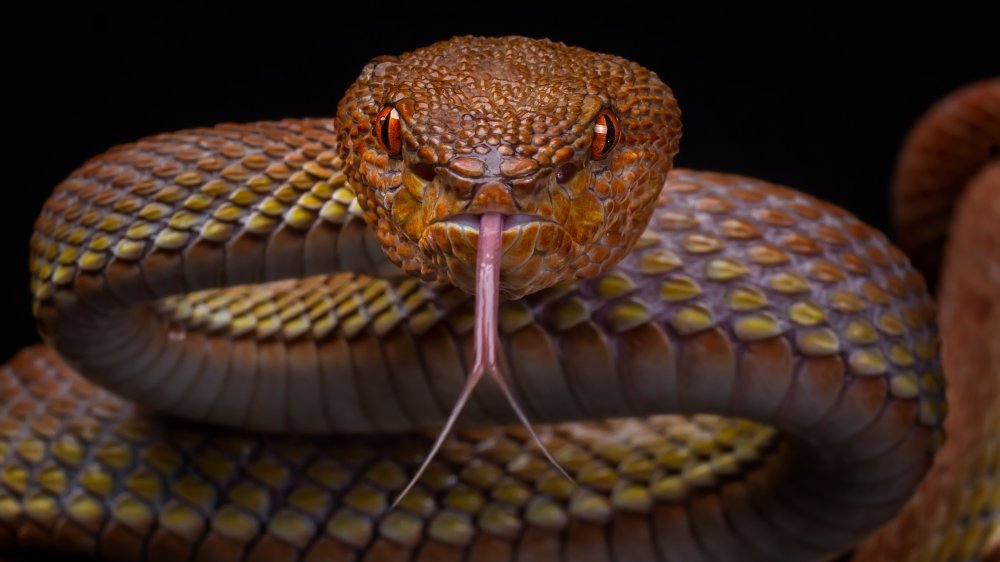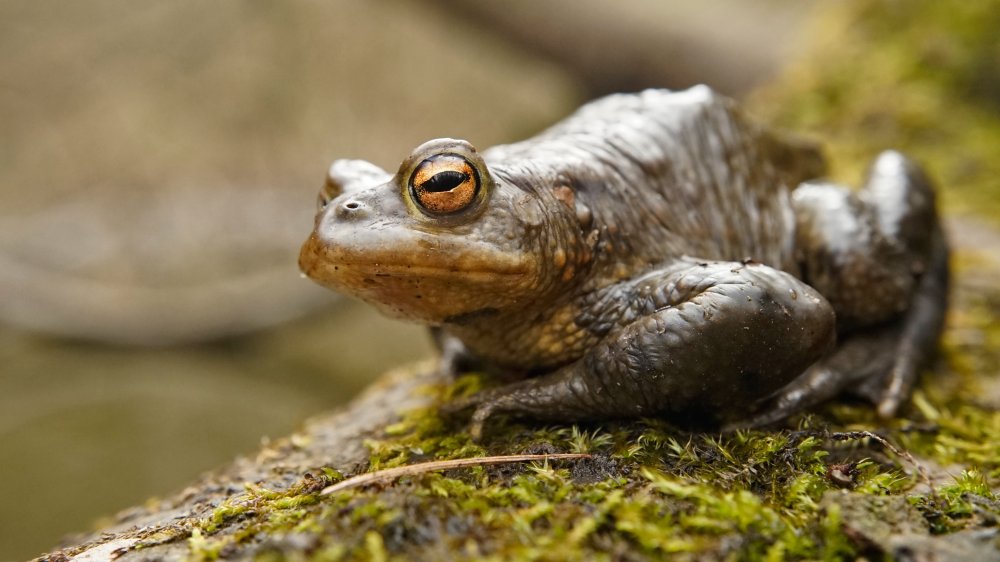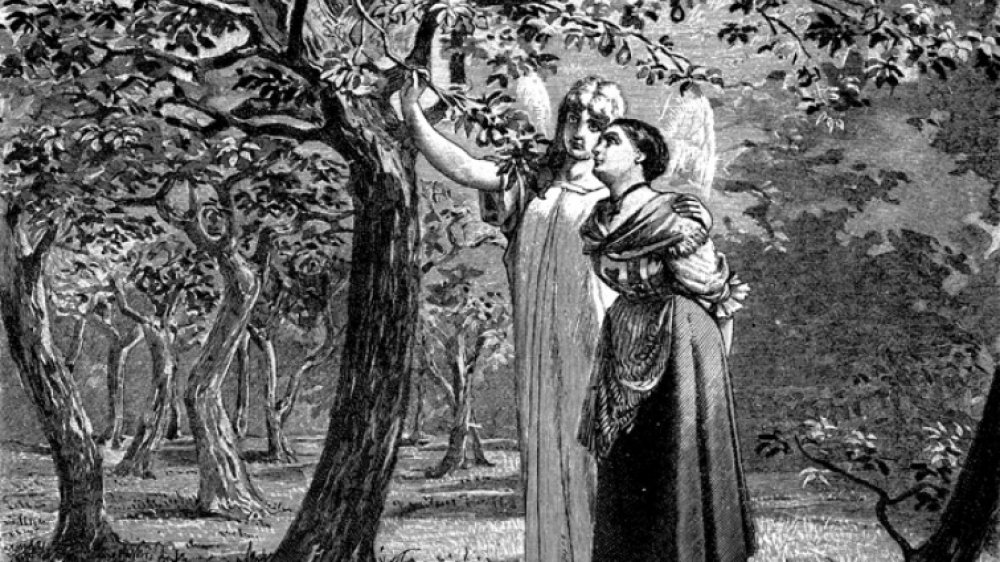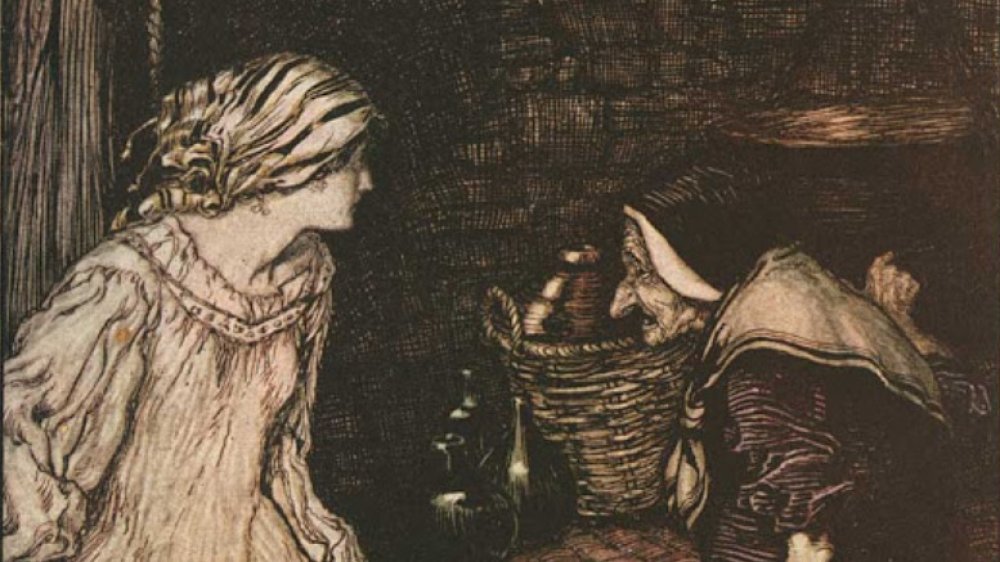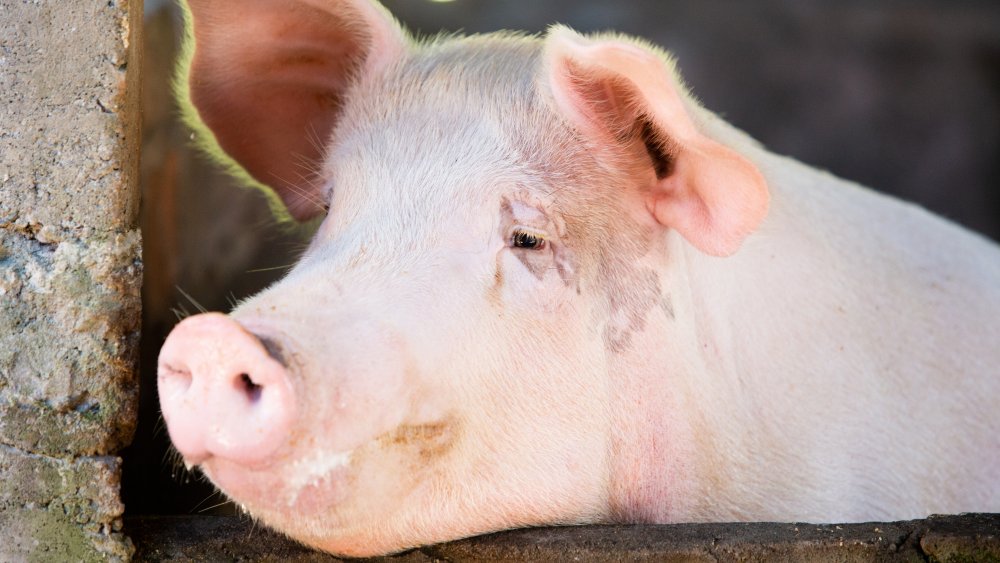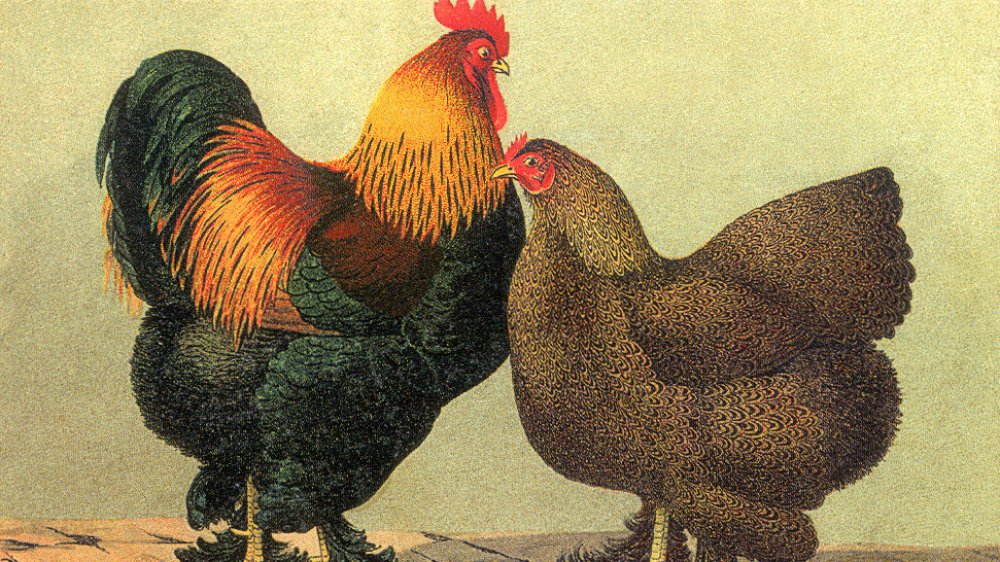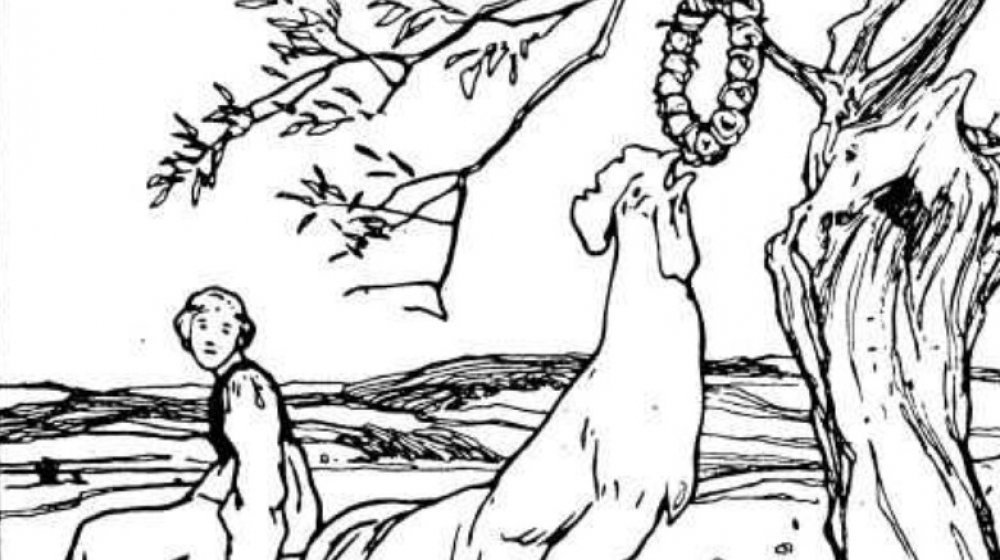The Most Messed Up Brothers Grimm Fairy Tales
Jakob and Wilhelm Grimm were linguistic scholars in 19th-century Germany who kind of fell by accident into being the names most popularly associated with fairy tales across the world when they started collecting oral folk tales from their friends and neighbors. Across multiple decades and seven editions, the Children's and Household Tales of the Brother Grimm became the definitive collection of fairy tales, including such hits as Cinderella, Snow White, Hansel and Gretel, Sleeping Beauty, Rapunzel, and literally hundreds of others.
While in those later editions the Grimms edited their tales to be more suitable for children, the earliest versions of these stories weren't always meant for young ears. Although the recent popular hyperbole in some circles is to suggest that there's practically no difference between a Grimms' fairy tale and a Friday the 13th movie, most of them aren't actually that dark. But some of them definitely are. Here are a few messed up tales that Disney isn't super likely to adapt to the big screen.
In 'The Goose Girl,' the Brothers Grimm give us a decapitated horse head
In "The Goose Girl," a guileless young princess is sent out to marry the prince of a distant kingdom, accompanied only by her talking horse Falada and a waiting maid who's decided she's tired of being a servant. While they're out in the wilderness, the maid forces the princess to trade clothes and identities, and the meek princess can only passively agree. When they arrive at the prince's kingdom, the maid marries the prince, and the true bride is sent to watch over the king's geese with a weirdly handsy little goose herder.
The false bride becomes rightly paranoid that her cover might be blown when she remembers the princess' best friend is a magical talking horse. Cooking up an excuse, the maid has Falada beheaded, but the gentle goose girl persuades the butcher to nail his head to the gate so that she can still look at him (gross). The severed head, it turns out, can still speak, and it even gives the princess daily affirmations. When the king sees the girl talking to a rotting horse head, he decides to follow her secretly and see what's up. He sees her magically control the wind and hears her confess her troubles to a stove, and so the jig is up for the false bride. The maid is stuffed in a barrel that has been hammered full of nails and gets rolled to death.
'The Juniper Tree' is a smorgasbord of atrocities
"The Juniper Tree" has more messed up stuff than we can fit here, but here are the gory CliffsNotes. It starts with a woman making a blood offering to a juniper tree in exchange for a baby. She dies from happiness when the baby is born and gets buried under the juniper tree. The father remarries, and of course, the stepmother hates her stepson, as fairytale stepmothers do. She tells the boy that there's an apple inside a chest, and when he leans down to pick it out, she slams the heavy lid shut, decapitating the boy. To make it worse, she convinces her own daughter that she killed her stepbrother by setting the severed head on top of the boy's body so that it will roll off when the girl touches it.
Wait, it gets worse. The stepmother then cooks the boy into a stew and makes her unsuspecting husband eat it all. The daughter secretly gathers up her brother's bones and buries them under the juniper tree. Suddenly, the boy comes back as a ghost bird, flies out of the tree, and swoops around the town, singing a song to everyone about how the stepmother killed him. Plus, he goes around asking for gifts. He gets a gold chain for his father and red shoes for his little sister. And finally, he gets a giant millstone that he drops on his stepmother's head.
The Brothers Grimm got really weird with 'The Fitcher's Bird'
"The Fitcher's Bird" is a variation on the well-known story of "Bluebeard" (which the Grimms also collected) that somehow manages to be much weirder. In this version, a wizard disguises himself as a beggar and kidnaps three beautiful sisters in succession and forces them to be his wife. He leaves the first sister alone at his magical castle with a ring of keys and an egg she's told to protect, but he tells her there's one room she can't enter. Naturally, she definitely goes in this room and is so shocked at its contents — the hacked-up, bloody remains of the wizard's previous wives piled up in a basin — that she drops the egg in a blood puddle, staining it. The wizard sees the evidence of her betrayal on the egg and adds her body to the pile. The same fate meets the second sister.
The third sister has the common sense not to take the egg with her when she finds the body pile, and she manages to reassemble her sisters, which brings them back to life for some reason. The wizard is pleased at her trustworthiness, and they begin to make arrangements for their wedding. But the tricky girl fools him into carrying her sisters home and escapes herself by rolling in honey and feathers and pretending to be a bird. She then burns the wizard and all his wizard friends alive. Like we said, weird.
'The Three Snake-Leaves' is a story of betrayal ... and leaves?
In "The Three Snake Leaves," a poor young man rises to the king's attention due to his accomplishments as a soldier, and he's granted the princess's hand as a reward. There's just one stipulation, however. When one of them dies, the other must agree to be entombed alive in the crypt with the body of their spouse. As luck would have it, the princess soon dies, and the newly minted prince finds himself sitting in a mausoleum with his dead wife. As he waits for starvation to take him, the prince sees a white serpent enter the crypt through a crack in the wall. Thinking the terrifying snake will bite the princess' body, he cuts it into three pieces with his sword. Soon, a mysterious second snake enters the crypt and places three leaves on the first snake's wounds, and it's magically restored to life.
Taking his cue from the snakes, the prince places the snake-leaves on the princess, and she returns to life. After being released from the crypt, however, the two take a sea voyage on which the princess falls in love with the captain, and the two conspire to murder the prince. Fortunately, the prince had given the snake-leaves to his most faithful servant, who revives the prince. The alive-again prince reports the princess and sea captain, who are executed for their crime.
'The Ungrateful Son' is a fairy tale full of nastiness
Some of Grimms' fairy tales are quite long and feature episode after episode of horrific things happening, like murder and cannibalism and what have you. But sometimes, in a story like "The Ungrateful Son," you can fit a whole lot of weird in a single paragraph.
In this story, a man and his wife are sitting and eating a roast chicken. When the man sees that his father is coming to visit them, he hides the chicken because he doesn't want to share it. He offers his father a drink, and the old man leaves with nary a bite of chicken. When the son goes to retrieve his dinner, he finds the chicken has transformed into a giant toad, which jumps onto his face and stays there forever. Face frog, forever. No one can remove the toad because whenever someone reaches for it, the toad acts as if it will then jump on their face, and no one wants a face frog forever. The man has to feed the toad every day or else the toad will start eating his face. That's it! That's the story. The moral is if your dad asks for chicken, give your dad chicken or else you get a face frog, forever.
'The Girl Without Hands' is actually worse than it sounds
For a lot of the more messed up Grimm tales, you have to get through at least a paragraph before things go off the rails, but in "The Girl Without Hands," the title kind of gives away the game from the jump. In this story, a man is tricked by the devil into promising him his daughter, but the devil can't ever claim the girl because she keeps her hands both literally and figuratively clean. The devil commands her to stop washing her hands, but then her weeping cleans them with her tears. The only remedy, of course, is to command the man to cut off his daughter's hands. This, it turns out, doesn't work either, because the girl's tears keep her stumps too clean for the devil.
As her father clearly can't protect her, the handless girl goes out into the world, where an angel watches over her until a king finds her eating fruit from his garden. The king has silver prosthetics made, and the two get married. The new queen has a baby while the king is traveling, but the devil (remember him?) forges fake letters that the queen should be executed. The queen and her baby escape, protected by the angel, who also makes her hands grow back. The king searches for them for seven years but doesn't recognize her when he finds her because she has hands now. Fortunately, she shows him the silver prosthetics, and believe it or not, the happy family is finally united.
'The Robber Bridegroom' is a fairy tale about gaslighting ... and cannibalism
"The Robber Bridegroom" is one of many stories of girls promised to mysterious and dangerous suitors. In this tale, a young girl's only prospect is a rich young man, but she doesn't trust the guy. Nevertheless, she has to marry him anyway. When she tells him that she doesn't know where he lives, he says he'll leave a trail of ashes for her to follow to his house in the woods. Not ominous at all. Distrustful of the bridegroom, she decides to check it out. When she gets to the terrifying woods house, a talking bird tells her that she's definitely in a murder house. An old woman, the only human who's home, tells her that her alleged groom is actually a cannibal, and he and his friends are planning to kill and eat her.
The old woman hides the girl in a barrel, from which she's able to witness the band of robbers bring home another young maiden, whom they chop to pieces. The maiden's finger lands in the barrel where the girl is hiding, but the old woman keeps the cannibals from looking in there. When a belly full of girl meat puts the robbers to sleep, the girl escapes and outs her murderous betrothed at her own wedding. He tries to gaslight her into thinking it was all a dream, but she uses the maiden's severed finger as proof, and the robbers are all executed.
'How Some Children Played at Slaughtering' is a horror double feature
The story "How Some Children Played at Slaughtering" is actually two stories, each horrible in their own way. They're both based on the premise that young children decide to play butcher, with one kid being the butcher and another being a pig, but the kids don't fully understand what "pretending" means, and the pig child doesn't live to play another day. In the first iteration, the child butcher is put on a strange sort of trial. The judge presents the boy with an apple and a coin and asks him to pick between them. The boy laughs and chooses the apple. The judge rules that this means the boy isn't old enough to reason yet, and so the child goes free without punishment.
The second iteration is somehow even worse. In this one, a boy kills his little brother while playing, and his mother hears while she is upstairs bathing her baby. When she runs down to see what happened, she, in her madness and grief, stabs the older brother to death. While this is happening, the baby, who was left in the tub, drowns. The woman, who has now lost all of her children, hangs herself. Then the dad comes home, and who can even imagine what he was thinking when he saw that scene. Anyway, he dies too, of course.
Honestly, what is 'Herr Korbes' even about?
It sounds like a setup to a weird joke: A rooster and a hen decide to take a trip, so they hitch four mice to a wagon and set out. It's not a joke, though. It's "Herr Korbes," one of the most baffling stories in the Grimms' catalog. While the two chickens are on the road, they meet a cat who asks where they're going. When they reply that they're going to Herr Korbes' house, the cat asks to join them. Soon, they're joined by a millstone, an egg, a duck, a pin, and a needle, all of whom cram into the tiny mouse carriage.
When they get to Herr Korbes' house, he isn't at home, so the various travelers hide themselves in different places, like the duck in the water bucket, the cat in the fireplace, and so on. Herr Korbes finally arrives, and the talking animals and objects begin to torture him, throwing ashes in his face, gluing his eyes shut, and stabbing him. When he runs out of the house, the millstone drops onto his head, killing him. The end, no moral.
(In the third edition of their tales, Wilhelm Grimm added the line "Herr Korbes must have been a very wicked man" to try to make any kind of sense out of a story that seems like something from the Saw franchise.)
'The Strange Feast' is an honest-to-God nightmare
There's no shortage of truly weird stories among those collected by the Grimms. Even the really famous ones are pretty weird when you think about them. But the crown for weirdest fairy tale in the lot may go to "The Strange Feast," a tale of two sausages who are friends (or are they???).
A blood sausage invites a liver sausage to dinner at her house, but when the liver sausage gets there, she sees all manner of weird things. There's a very long staircase, and on every step is a different piece of nightmare fuel. One step has a shovel and a broom fighting each other, while another holds a monkey with a large head wound. (The text then says "and more such things," as if these two examples establish some kind of pattern, but okay.)
The blood sausage greets the liver sausage warmly and brushes off the strange sights from the stairs as no big deal. When the blood sausage says she needs to check on something in the other room, a mysterious voice tells the liver sausage that she's definitely in a murder house, and so the liver sausage beats feet out of there. When she's a safe distance away, she turns around and sees the blood sausage looking out the attic window with a huge knife screaming, "If I had caught you, I would have had you!" Try this one out with your kids at bedtime.
'The Hare's Bride' is not a happy fairy tale
"The Hare's Bride" is like a fever dream warping of a Beatrix Potter book. When a woman sees a hare breaking into her garden to eat her cabbages, she sends her daughter out to shoo the long-eared pest away. Three times the girl goes to shoo the hare, and three times the hare tells her to sit on his tail and ride to his little hut. (Is this a metaphor for something? Impossible to say.) The first two times she rejects him, but the third time, curiosity gets the best of her, and the girl sits on the hare's tail. The hare races off to his hut, and as soon as they get there, he tells the girl to start cooking up some cabbage for their wedding. Typical hare, to be honest.
Soon, the wedding guests arrive, comprised of a bunch of hares, naturally, plus a crow to act as the minister. However, the girl did not, in fact, cook cabbage as she was overwhelmed with grief and fear. This wasn't helped by the fact that the hare kept banging on the hut's door and yelling, "Hurry, the guests are hungry!" Finally, the girl creates a straw doll that she dresses in her clothes and sets next to the cooking pot and makes her escape. When the hare bursts in and sees the cabbage isn't cooked, he punches the doll's head off, which makes him sad. The end.
The Brothers Grimm racked up quite the bodycount with 'The Death of the Little Hen'
In the case of "The Death of the Little Hen," the title is actually an understatement.That's right. The hen actually double dies. No, wait. That's not right. What actually happens is a hen and a rooster go to Nut Mountain (not a euphemism) and eat nuts (also not a euphemism). The hen finds a really good nut (still no) but chokes on that nut (definitely not a euphemism). The rooster runs off to try to find water to help the choking chicken (still no), but ends up so embroiled in a series of useless errands that the hen dies before he can help her.
The rooster holds a funeral for the hen, and all the animals attend. The hearse is a little carriage pulled by mice driven by the rooster, but a series of increasingly large animals — fox, wolf, bear, elk, and lion — all ask to hitch a ride in the tiny carriage. When they come to a stream, a talking straw volunteers to act as bridge, and the six mice drown when it breaks. A live coal then offers, but it fizzles when it hits the water. Finally, a stone does the job of bridge capably, but the combined weight of every animal in the forest causes the carriage to tip over and all the animals but the rooster to drown. The rooster buries the hen and then dies of grief. The last line seriously goes "and then everyone was dead." Sweet dreams, kids.
